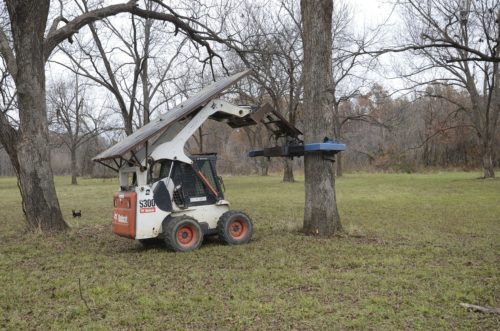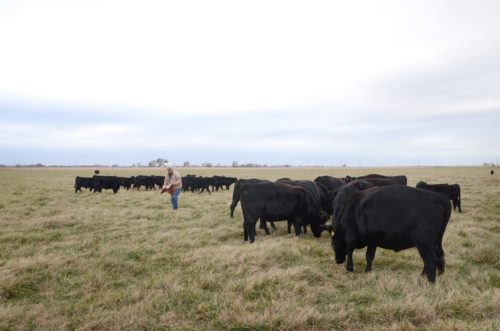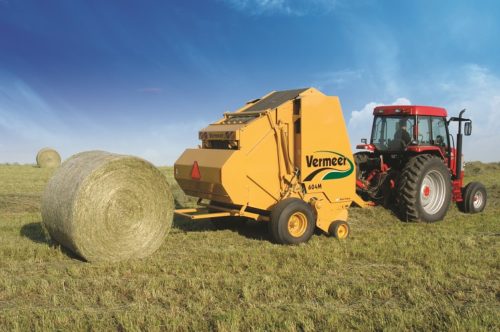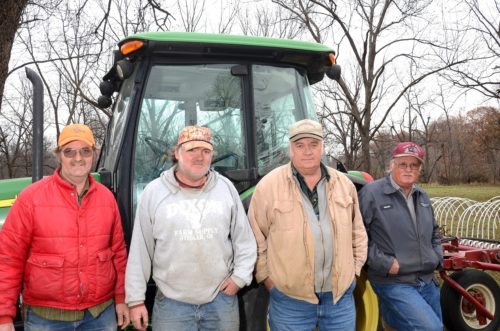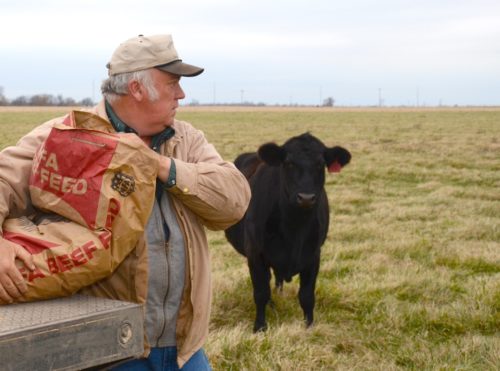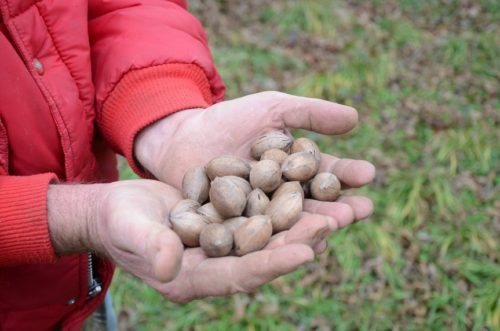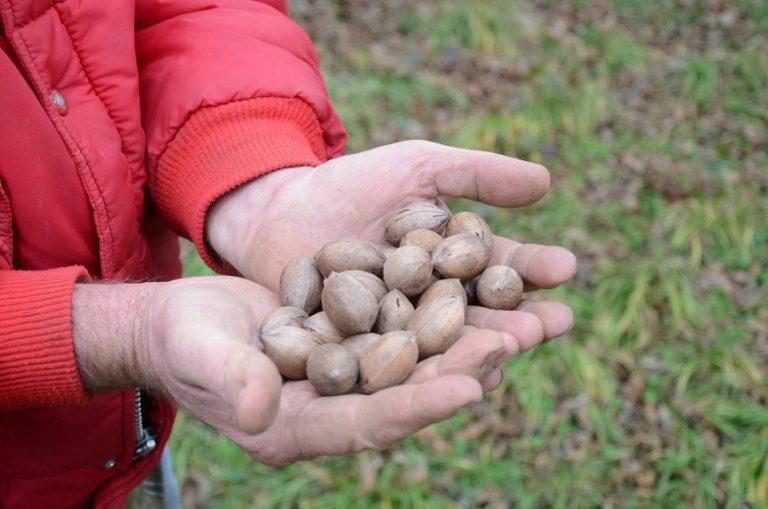
Flexibility is Key
February 2016
In this day and age when a growing number of farmers are taking land out of grass and pasture to plant corn or soybeans, Morgan Brothers Farm has been doing just the opposite. That’s because V. O., Melvin, Willie and Harold Morgan, who manage approximately 5,500 acres near Welch, Oklahoma, count beef and pecans as their main crops, even though they also grow about 900 acres of corn, soybeans and wheat.
“One of the last farms we bought was in row crops before we seeded it to grass,” said V. O. Morgan, the oldest of the four brothers. “We planted about half of the field to fescue for pasture, while the other side was seeded to Bermuda grass for hay. Then, we over-seeded the pasture side with Bermuda and added lespedeza on the hay side.”
Of course, with nearly 600 head of cows and a constantly fluctuating number of calves, hay fields and pasture are just as important to the operation as the 800 acres of pecan groves the brothers harvest each fall.
“It seems like some years, the pecans supplement the cattle operation, and other years the cattle supplement the pecans,” V. O. joked. “However, they do make a good combination.”
There have been times, in fact, when grass has been in short supply, that the Morgans have even grazed cattle around the trees or harvested hay from the orchards. With over 3,000 acres of pasture, that’s not a common occurrence, though.
Meanwhile, the family’s 8,000 plus pecan trees yield between 300 and 700 pounds per acre of nuts that go to the wholesale market. With anywhere from five to 14 trees per acre, depending upon their size and maturity, nobody is quite sure just how many trees they own, which is why they count acres, not trees. Even then, the Morgans continue to plant new trees each year. Most these days are native saplings to which the brothers have grafted cuttings from improved varieties for even better yield and quality.
Pecans and livestock are hardly new to the Morgan brothers, however. A small portion of the farm actually goes back three generations to their grandfather.
“I never really knew my grandpa, because I was only about two years old when he died,” V. O. related. “The irony is that he lost the farm back in the 1930s when the final blow came from a barn fire that took almost everything he owned. We’ve since bought most of that land back and added substantially to the land that Dad had when he retired,” he added, noting that their father has since passed, while their mother still lives on the home farm. “Dad loved to make hay.”
Fortunately, the apple didn’t fall far from the tree, so to speak. Today, the Morgan brothers continue to cut and bale at least 1,000 acres of hay annually with four Vermeer disc mowers and two Vermeer round balers — a 604 Super M and a 605 Super M. As for the two balers, most of the crop is baled with the 605 Super M for their own use. However, any hay that they plan to sell is put up with the smaller machine in four-foot bales.
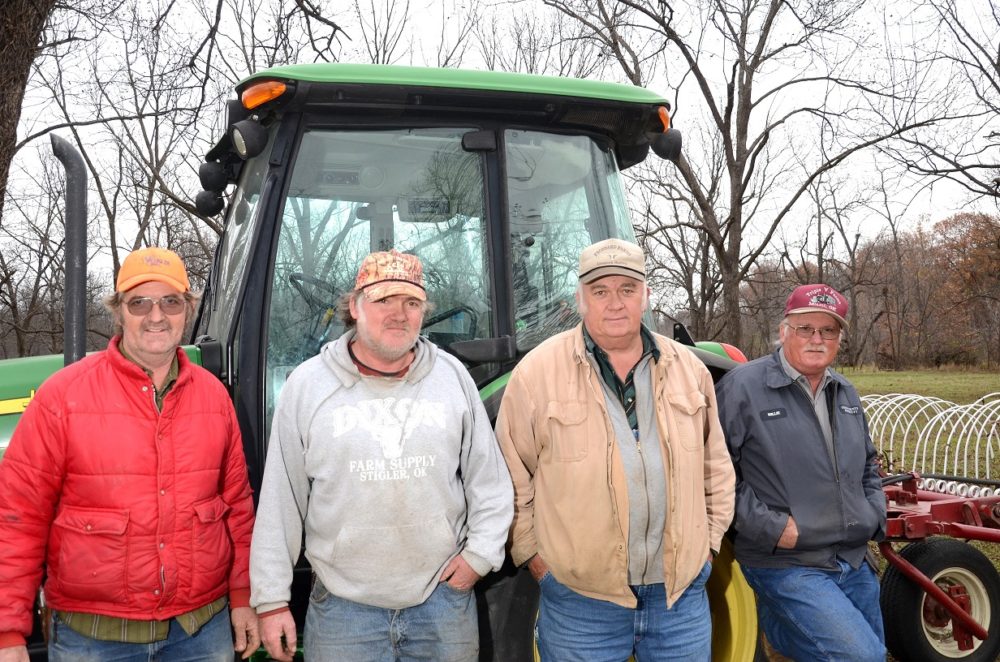
“We actually had the 605J the longest of any of them,” said Melvin. “We had it for 10 years and the guy who bought it was still using it the last we knew. Vermeer builds great machines and, now that we have Eubanks Equipment about seven miles away, we never unhook a baler from the tractor. If we have a problem, we just drive it over.”
“The 604 Super M makes a really tight bale that is perfect for shipping,” Melvin added. “The four-foot width is also just right for stacking bales two wide on a semi trailer, which is the main reason we bought it.”
In most cases, the brothers simply market hay to areas that are short on forage due to a drought or other environmental issue, rather than feedlots or dairies. Consequently, a lot of the extra hay they baled two years ago went to Texas and the Oklahoma Panhandle during the drought.
“We don’t feel like we have to get top dollar,” Willie explained. “But we like to get what it’s worth. If we can sell somebody the first load, we can generally sell them some more.”
In the meantime, they always make sure they have more hay than they anticipate needing for themselves during the winter. One reason is that V. O. tries to attend a cattle sale at least once a week to look for calves that they think they can “upgrade” or improve.
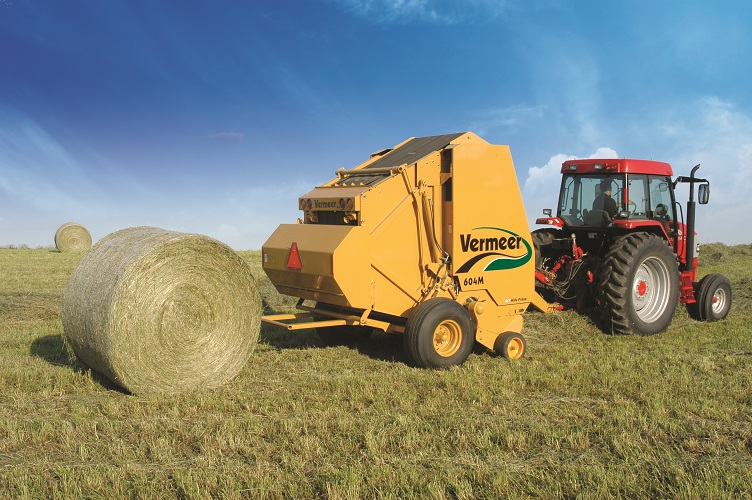
“In addition to our own calves, we buy a lot of animals during the year that are between 225 and 300 pounds,” V. O. explained. “That includes a fair number of dairy calves. We’ll background them for awhile with the idea of putting a little weight on them and then when we think we can make some money on them, we’ll sell ‘em.”
Having extra bales on hand has also presented the brothers with other opportunities. One of the best examples occurred a couple years ago when they asked a buyer in Texas to look for some more calves they could background. Instead, he found that, due to the drought, the brothers could buy mature cows for about the same price.
“So we just went ahead and bought a bunch more cows,” V. O. recalled. “If we hadn’t had as much extra hay on hand as we did, we wouldn’t have been able to take advantage of that opportunity.”
Flexibility seems to be the rule, rather than the exception, however. Willie notes, for instance, that the majority of their fields are fenced, even if they’re generally used for crops. That allows them to graze wheat, or even cornstalks, during the winter. Similarly, a field may be used for pasture one year and cut and harvested for hay the next year. It just depends on whether the greater need is for pasture or bales.
“Quite often, we’ll even no-till wheat into soybean stubble as soon as the beans come off and graze that over the winter,” Willie added, noting that they also double-crop soybeans after wheat. “The cattle do very well on wheat pasture. Regardless of what we do, though, we try to stay flexible.”

